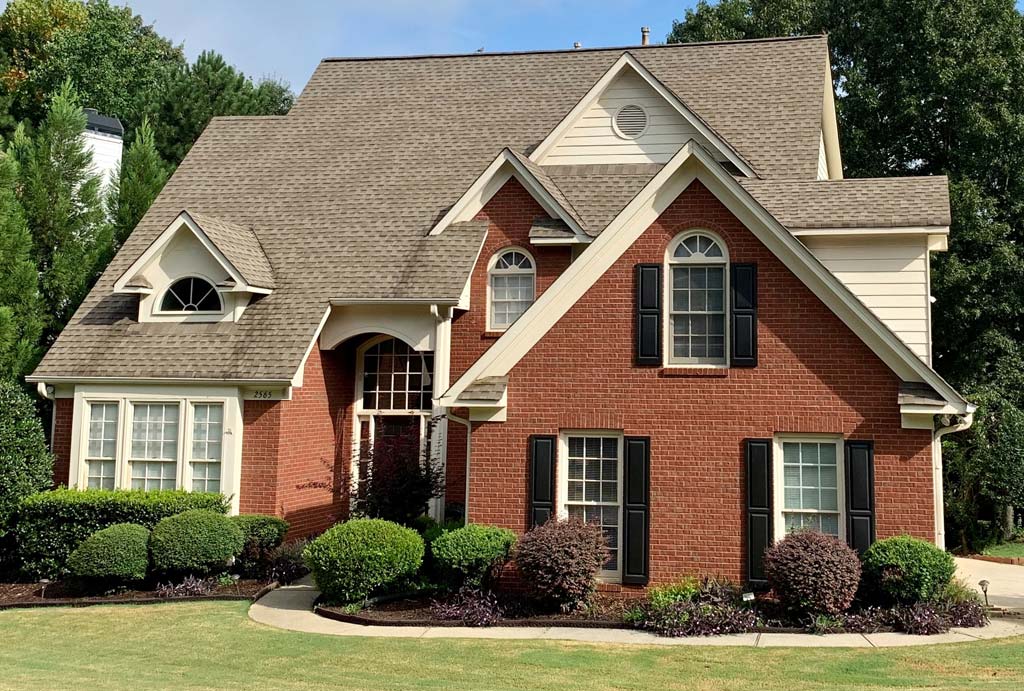Today’s roofing materials offer homeowners many alternatives including cedar shakes, clay tiles, slate, and metal. Many budget-conscious consumers find asphalt shingles to be one of more desirable possibilities. Asphalt roof shingles, or composition shingles as they are also called, provide an appealing appearance and reasonable protection for considerably less than many other options.
Asphalt shingles come in two varieties.
The Two Kinds of Asphalt Shingles
Organic shingles are the older sort of roof shingles. Manufacturers make them by saturating waste paper with asphalt to waterproof it and embed layers of adhesive salt and ceramic granules on top.
Fiberglass shingles are the more recent invention. To make them, manufacturers start with a base layer of glass fiber reinforcing mat. They then coat this base layer with asphalt containing mineral fibers. Once again, the coating makes the asphalt shingles waterproof.
The differing compositions of the two types of asphalt shingles give them somewhat different qualities. Organic shingles are more durable but also more flammable then fiberglass ones, which provide excellent fire protection. In addition, the high asphalt (which is to say, oil-based) content of organic shingles makes them the less “green” alternative. On balance, most people feel fiberglass shingles are the superior choice, and they are gradually edging organic ones out of the marketplace.
Whichever type of roof shingles homeowners are considering, they should be aware that all asphalt shingles present certain advantages and some disadvantages as well.
Advantages of Asphalt Roof Shingles
As mentioned previously, asphalt shingles are one of the most affordable options for roof shingles, at least in the short term, and once installed, they should provide a house with acceptable protection from 12 to 17 years.
Easy Installation of Asphalt Shingles
Asphalt shingles are fairly lightweight, albeit, not the lightest possible alternative. They don’t require extensive preparation, special tools, or special training to install. Any professional roofing company can do the job.
That means the installation should be finished in just a few days. That can save the homeowner money on labor costs, as can the fact that so many roofing contractors vie for asphalt shingle roofing jobs. Because of this, competitive pricing is common.
In any case, customers can confidently expect installation to cost significantly less than the installation of metal, riles, or slate.
Variety
Despite the comparatively modest upfront cost, asphalt shingles provide homeowners with several options as to their appearance. They are available as 3-tab shingles, architectural style shingles, and premium style shingles.
3-tab Shingles
With their simple 3-tab pattern, 3-tab shingles are the most economical choice. The shingles themselves cost about $75 to $90 to cover 100 square feet.
3-tab shingles are rated to withstand 60 to 70 mph wind uplift and generally come with a manufacturer’s limited warranty of 10 to 25 years.
Architectural Style Shingles
Architectural style shingles are also known as dimensional (laminated or composition) shingles. Asphalt shingles of this type enhance the appearance of a roof by counterfeiting the look of natural wood or slate roof shingles.
The customer pays somewhat more for that enhanced appearance. Generally speaking, it costs $140 to $180 to buy enough shingles to cover 100 square feet.
Architectural roof shingles are rated to withstand 110 to 130 mph of wind uplift and come with a manufacturer’s limited warranty of 20 to 50 years.
Premium Shingles
Because of their unique appearance, premium shingles are often considered the most desirable type of asphalt shingle, and their price reflects this. It costs from $225 to $250 for enough shingles to cover 100 square feet.
Premium shingles are typically rated to withstand 110 mph of wind uplift and come with a manufacturer’s limited lifetime warranty.
Variety: Further Considerations
Whichever of the three types a person prefers, asphalt shingles are available in various colors including green, blue, yellow, and red. They come in a number of patterns as well, and the combination of choices helps homeowners make their houses look attractive and unique.
Unfortunately, asphalt shingles have some disadvantages as well.
Disadvantages of Asphalt Shingles
Asphalt roof shingles are more easily damaged than a number of other alternatives.
Installation can damage them if done when the temperature is below freezing.
Asphalt roof shingles tend to do better in cooler climates because extreme heat can cause them to loose color and crack.
Extreme temperature fluctuations can also cause asphalt roof shingles to expand, contract, and eventually crack.
The cheaper asphalt shingles, notably, the 3-tab variety, are more vulnerable to wind uplift than many of the other available materials.
Finally, attic ventilation issues can damage asphalt shingles.
Maintenance
Because they’re more susceptible to damage, asphalt shingles require more in the way of regular maintenance and repair with the periodic expense that entails. When homeowners discover damage, they should undertake repairs promptly, certainly before the next rain- or snowfall, to keep the problem from getting worse.
Environmental Considerations
As mentioned above, organic shingles are more of an environmental problem than fiberglass shingles, but in fact, neither sort of asphalt roofing shingle is an especially green choice. All asphalt roof shingles are a petroleum-based material, and as a result, manufacturing them takes a lot of energy and releases greenhouse gases.
Moreover, as a general rule, asphalt shingles aren’t recycled. They end up in landfills after a relatively brief service life compared to a number of other more environmentally friendly alternatives.
By weighing the advantages and disadvantages and discussing the alternatives with a roofing professional, homeowners can make a sensible choice as to whether asphalt shingles are right for them.


